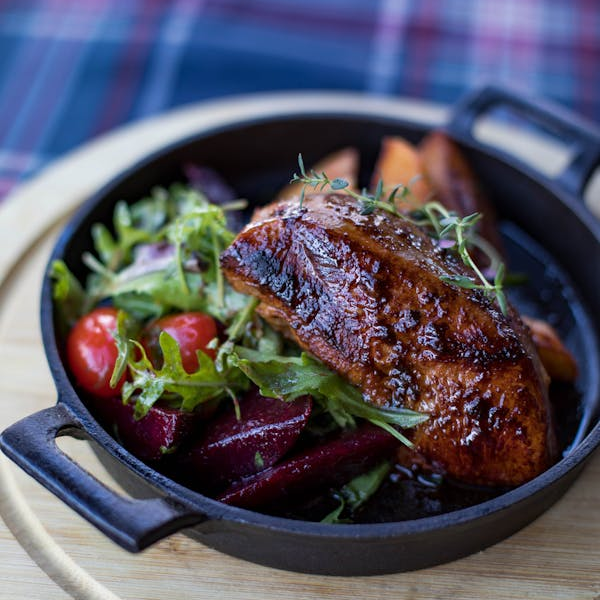Beets, with their vibrant color and earthy flavor, are a versatile root vegetable that can be enjoyed in a variety of dishes. Whether you prefer them roasted, boiled, pickled, or juiced, beets offer a unique and nutritious addition to your meals.
Choosing the Right Beets
When selecting beets, look for firm, smooth ones with a deep, rich color. Avoid beets with cracks or soft spots. The greens should be fresh and vibrant.
Preparing Beets for Cooking
Wash thoroughly: Scrub the beets under cold water to remove any dirt or grit.
Trim the greens: Cut the greens about an inch above the beet.
Optional: Peel or leave the skin on: While peeling beets can remove some of the nutrients, it can also make them easier to eat. If you prefer to leave the skin on, scrub it well before cooking.
Cooking Methods for Beets
Boiling
Bring a pot of salted water to a boil: Add the beets to the boiling water.
Cook until tender: Cook for 20-30 minutes, or until the beets are tender when pierced with a fork.
Shock in cold water: Drain the beets and immediately plunge them into a bowl of ice water to stop the cooking process and preserve the bright color.
Roasting
Preheat oven to 400°F (200°C).
Wrap in foil: Wrap the beets individually in foil.
Roast until tender: Roast for 45-60 minutes, or until the beets are tender when pierced with a fork.
Unwrap and cool: Let the beets cool slightly before peeling.
Steaming
Fill a steamer basket with water: Bring the water to a boil.
Place beets in steamer basket: Place the beets in the steamer basket.
Steam until tender: Steam for 15-20 minutes, or until the beets are tender.
Pickling
Prepare a brine: Combine vinegar, water, sugar, and salt in a saucepan.After bringing to a boil, simmer for a short while. Include beets: To the brine, add the cooked beets.
Let cool and refrigerate: Let the beets cool completely before transferring them to a jar and refrigerating.
Juicing
Wash and chop beets: Wash the beets and chop them into pieces that will fit in your juicer.
Juice: Juice the beets and enjoy the fresh juice immediately or store it in the refrigerator.
Tips for Cooking Beets
Preserve color: To prevent beets from losing their color, cook them quickly and avoid overcooking.
Add flavor: Enhance the flavor of beets by roasting them with herbs, spices, or a drizzle of olive oil.
Use leftover beets: Leftover beets can be used in salads, soups, smoothies, or as a side dish.
Nutritional Benefits of Beets
Beets are packed with nutrients, including:
Vitamins: Vitamins A, B6, C, and K
Minerals: Potassium, manganese, copper, and iron
Fiber: A good source of dietary fiber is beets.
Nitrates: Beets contain nitrates, which have been linked to improved blood flow and athletic performance.
FAQs
What is beetroot?
Beetroot, also known as beets, is a root vegetable that has a deep purple color and earthy flavor. It’s rich in nutrients like vitamins A and C, potassium, and antioxidants, making it a healthy addition to any diet.
How do you choose fresh beetroot?
When selecting fresh beetroot, look for firm, smooth skin with no soft spots or blemishes. Smaller beets tend to be sweeter and more tender. Fresh greens attached to the beets should be vibrant and crisp.
How do you prepare beetroot for cooking?
Start by washing the beetroot thoroughly to remove dirt. Trim the tops and roots, but avoid cutting into the beet itself to prevent bleeding. You can peel them before or after cooking, depending on your preference.
What are the different methods to cook beetroot?
Boiling: Place whole beetroots in a pot of water and simmer for 30–45 minutes until tender. Once cooled, peel and slice.
Roasting: Wrap beets in foil and roast at 400°F (200°C) for about 45 minutes to 1 hour until fork-tender. Roasting enhances their natural sweetness.
Steaming: Steam peeled or whole beetroots for about 30 minutes until soft.
Microwaving: Place washed beets in a microwave-safe dish with a little water, cover, and cook on high for about 8–10 minutes.
Can you eat beetroot raw?
Yes, beetroot can be enjoyed raw! Grate it into salads or slice it thinly for a refreshing crunch. Raw beetroot retains all its nutrients and has a slightly different flavor profile than cooked beets.
How can I add flavor to cooked beetroot?
To enhance the flavor, try:
Tossing roasted beets with olive oil, balsamic vinegar, and herbs.
Adding spices like cumin or paprika.
Mixing cooked beets with feta cheese, nuts, or citrus for a vibrant salad.
How do you store cooked beetroot?
Store cooked beetroot in an airtight container in the refrigerator for up to 5 days. You can also freeze cooked beetroot for up to 10 months. Just ensure they’re in freezer-safe containers.
Are there any health benefits to eating beetroot?
Yes! Beetroot is known to support heart health, improve exercise performance, and may help lower blood pressure due to its high nitrate content. It’s also beneficial for liver detoxification.
Conclusion
Cooking beetroot is a straightforward process that unlocks its unique flavors and numerous health benefits. Whether you choose to boil, roast, steam, or enjoy it raw, beetroot adds a vibrant color and earthy taste to various dishes. With its versatility, you can easily incorporate beetroot into salads, sides, or even smoothies.
Remember to select fresh, firm beets, and experiment with different cooking methods and flavor pairings to discover your favorite way to enjoy this nutritious root vegetable. Whether you’re a seasoned cook or trying beetroot for the first time, these tips will help you appreciate all that this remarkable vegetable has to offer!
To read more, Click here.

